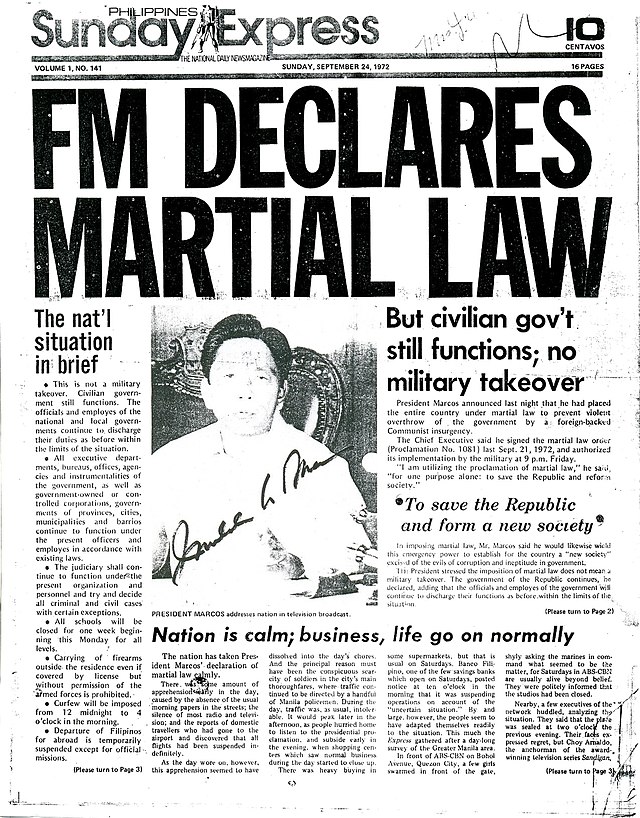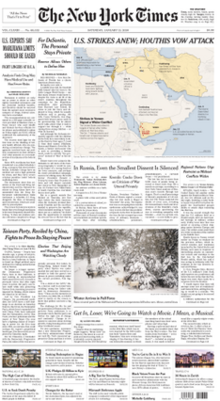All about News Articles
All about News Articles
Blog Article
Little Known Facts About News Articles.
Table of ContentsEverything about News ArticlesNot known Facts About News ArticlesExcitement About News ArticlesOur News Articles DiariesAll about News Articles
Excellent understanding of different subjects offers trainees an one-upmanship over their peers. Despite the fact that digital and social networks are readily easily accessible, we should not neglect how crucial it is to review the newspapers. Parents need to attempt and instill the practice of checking out a paper as a daily routine to proceed the heritage of the revered print medium.News tales additionally contain at the very least among the adhering to important attributes relative to the intended audience: proximity, importance, timeliness, human rate of interest, quirk, or consequence. The relevant term journalese is often made use of, usually pejoratively, to refer to news-style writing. Another is headlinese. Newspapers generally comply with an expository writing style.
Within these restrictions, information tales likewise aim to be comprehensive. However, various other variables are entailed, some stylistic and some obtained from the media form. Amongst the larger and more highly regarded papers, fairness and balance is a significant aspect in presenting details. Commentary is usually constrained to a different area, though each paper might have a different total slant.
Papers with an international audience, for example, have a tendency to use a more formal design of writing. News Articles.; usual style guides include the and the US Information Style Publication.
Things about News Articles
As a guideline, reporters will not use a lengthy word when a short one will certainly do. Information writers attempt to avoid making use of the exact same word more than as soon as in a paragraph (often called an "echo" or "word mirror").
Headlines occasionally omit the topic (e.g., "Leaps From Boat, Catches in Wheel") or verb (e.g., "Pet cat woman fortunate"). A subhead (additionally subhed, sub-headline, subheading, subtitle, deck or dek) can be either a subservient title under the main heading, or the heading of a subsection of the article. It is a heading that comes before the major text, or a team of paragraphs of the major text.

Extra billboards of any of these kinds might show up later in the article (especially on succeeding web pages) to attract additional reading. Such signboards are additionally made use of as reminders to the post in other sections of the magazine or site, or as advertisements my blog for the piece in other publication or sites. Regular structure with title, lead paragraph (recap in vibrant), various other paragraphs (information) and get in touch with information.

Instance of a hard-lead paragraph NASA is suggesting another room job. The budget demands roughly $10 billion for the task.
The NASA news came as the company requested $10 billion of appropriations for the job. An "off-lead" is the second essential front web page news of the day. The off-lead shows up either in the top left edge, or directly listed below the lead on the right. To "bury the lead" is to start the post with history info or information of second importance to the viewers, forcing them to check out even more deeply into a short article than they must have to in order to uncover the vital points.
The Ultimate Guide To News Articles
Typical use is that a person or more sentences each create their very own paragraph. Journalists normally explain the company or structure of a news story as an inverted pyramid. The vital and most fascinating aspects of a story are put at the start, with sustaining details complying with in order of reducing value.
It enables people to explore a subject to just the deepness that their interest takes them, and without the imposition of details or subtleties that they might think about unimportant, but still making that information readily available to extra interested visitors. The inverted pyramid structure additionally enables short articles to be cut to any type of approximate length during layout, to suit the space readily available.
Some authors start their tales with the "1-2-3 lead", yet there are several kinds of lead available. A kicker can refer to multiple points: The last story in the news program; a "delighted" story to end the show.
Longer posts, such as magazine cover write-ups and the pieces that lead the within sections of a paper, are known as. Function tales vary from straight news in a number of methods.
The Ultimate Guide To News Articles
A feature's very first paragraphs often associate an intriguing moment or event, as in an "anecdotal lead". From the details of an individual or episode, its sight rapidly widens her comment is here to generalities about the story's topic.

The Editor's Tool kit: A Recommendation Guide for visit this website Beginners and Professionals (2001) Allan M. Siegal and William G. Connolly. The New York Times Guidebook of Style and Use: The Official Design Guide Used by the Writers and Editors of the Globe's Many Authoritative Paper (2002) M. L. Stein, Susan Paterno, and R.
Report this page